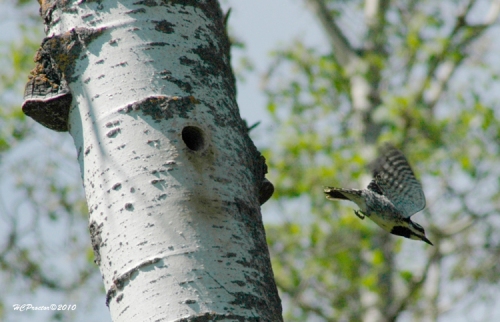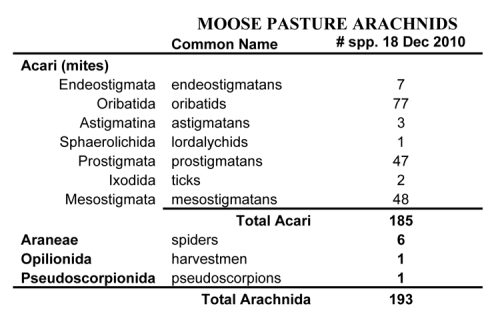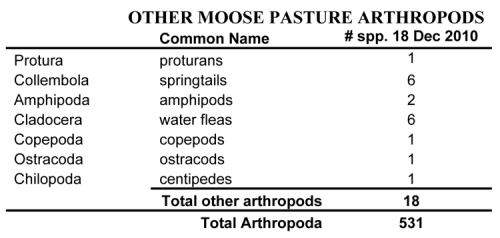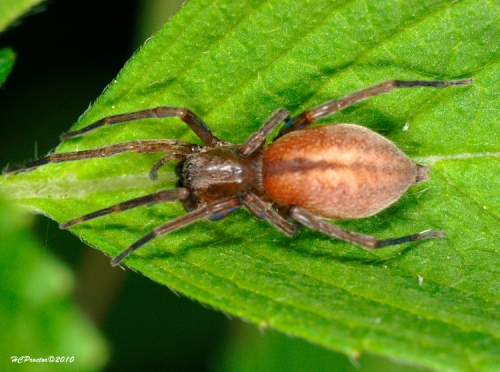Although this is not the most active blog on the internet, behind the scenes things have been moving along at a reasonable pace. Our goal is to document the flora and fauna of our 160 acres, more or less, of more or less natural habitat in the Beaver Hills area of Alberta. We are now ready to post on our preliminary findings and first up is the fauna.
This morning according to the always questionable and often unreliable Wikipedia ‘fauna’ means “all of the animal life of any particular region or time”. Time is especially important here: we mean at the end of 2010. Not 10,000 years ago when there was no fauna, just a kilometer or two of ice. Not 9,000 years ago when stagnant hunks of ice left by retreating glaciers were slowly giving birth to small lakes surrounded by mounds of rocks and gravel. Not in the middle of the last century when there were meadows and cattle – the cattle are long gone and the meadows gone for an undetermined number of decades thanks to the beavers. No, we are talking about a quarter section of kettles filled with marsh, ponds, and lakes; lake shores with a variety of grasses, herbs, and shrubs as far up as the beaver forage; and beyond the reach of the beavers, knobs covered with aspen forest with a few white birch and white spruce here and there.
I suppose since we have started talking about vertebrates, and most people tend to think of wildlife only in vertebrate terms, we might as well start there. As you can see from the table above, most Moose Pasture vertebrates are birds and since many people think of all invertebrates as ‘bugs’ we will consider all those afflicted with a backbone as ‘biridibrates’. We include ourselves within the 16 species of mammalian birdibrates – although we are just transients – but most of the rest live their lives at the Moose Pasture, or at least wander through on a regular basis (including about 5 moose).
We will undoubtedly discover more birdibrates as time goes on, e.g. skunk, mink, and meadow vole have yet to be seen. Some birdibrates, however, may never be seen. For example, although about 28% of the Moose Pasture is covered with water, we have yet to find any fish. There is a slight chance that the Brook Stickleback (Culaea inconstans) is present, we have had loons raise young on the lake, but we have been unable to trap any. But we may have one of Alberta’s 6 species of snakes: the Red-sided Garter Snake (Thamnophis sirtalis parietalis). We saw one about a kilometer away, so it probably at least passes through.
Well, enough for the birdibrates for the moment. Birds and mammals are fine as far as they go, but they are far more boring than the other 87% of the fauna we have documented – the invertebrates. These are many and varied and take up most of our time and energy trying to document: with the exception of dragonflies and damselflies, butterflies, and lady beetles there are no useful field guides. That means hard yakka with tedious scientific publications or the far more entertaining (but less accurate) BugGuide.
From the following tables you can see that although we are spreading out net wide, we have preferences. Arachnids are high on the list, but we are badly malingering on the spiders. Insects are getting less than their fare share too – and within the insects only the Odonata and Hymenoptera have been getting more than short shrift. However, it is a start, and future posts will deal with each of the groups – what we have found and what we have not. Then there is the flora too – a summary of which will be in the next posting.














